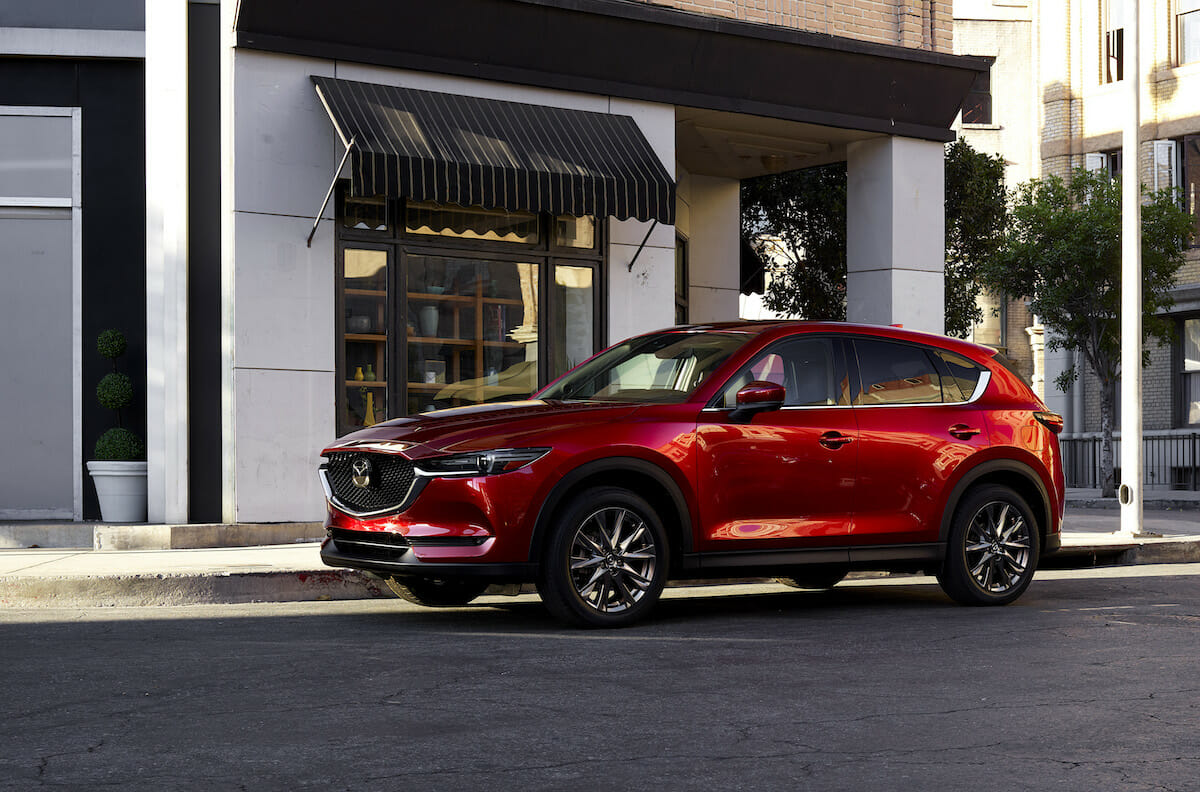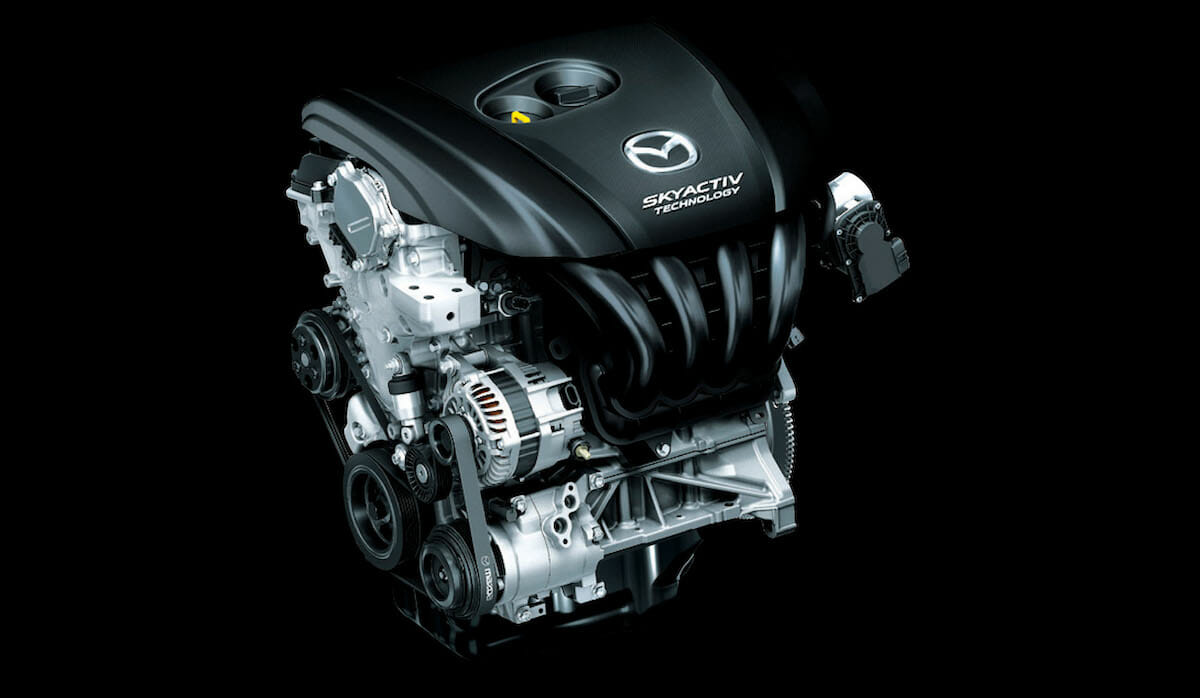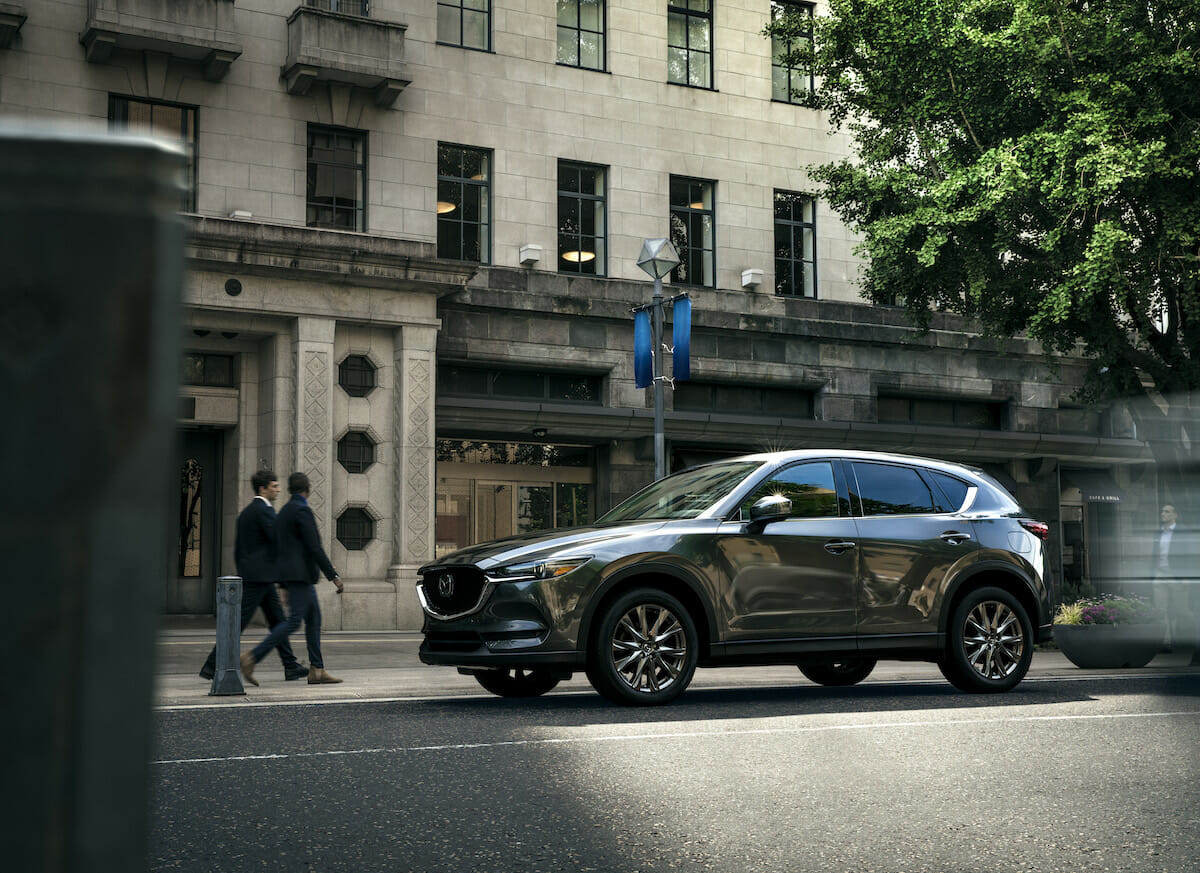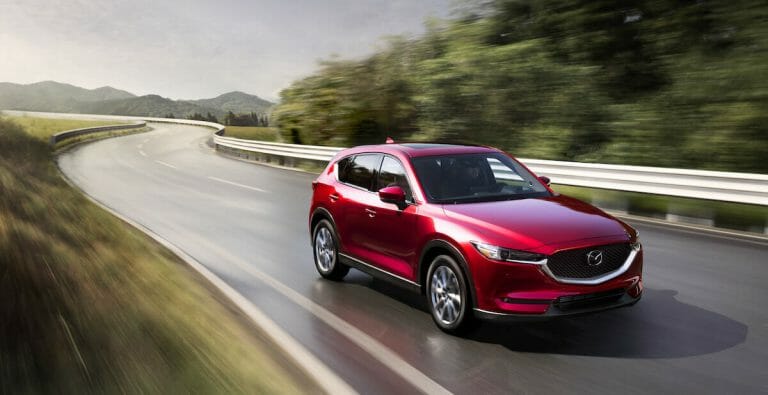The Mazda CX-5 is one of the best midsize SUV options in its class. Much of its success comes from its Skyactiv line of engine options, built to boost performance and fuel economy. Plus, a diesel option was offered for 2019.

Key Points
- The Mazda CX-5 has highly reliable engine offerings, a turbo 2.0L, a non-turbo or turbo 2.5L, and a short-lived 2.2L diesel.
- Since the model’s 2013 debut, just one recall was issued, regarding the engine.
- All engines provide competitive fuel economy, with the 2016 model delivering 26 mpg in the city and 35 mpg at highway speeds.
Mazda’s Popular CX-5 Crossover Offers a Wide Assortment of Engine Options with Skyactiv Technology
The CX-5 debuted in 2013, Mazda’s first true entry in the competitive segment. It has since had three available engines, a 2.0L turbo four-cylinder, a 2.5L available with or without a turbo, and a 2.2L Skyactiv-D diesel.
Regardless of the engine, the CX-5 holds a high rating with owners here at Vehicle History, where it holds a 4.8-star rating of out five. Again, much of the model’s fame stems from its reliable, potent, and efficient engine options, which we’ll discuss below.
But first, what exactly is Skyactiv technology, and why has it helped Mazda build such a solid name?

Skyactiv Technology: A Mazda Specific to Improve Overall Engine Performance
For the Skyactiv-G engines, there are a number of efficiencies that help the engine perform better with less fuel.
The engine compression ratio was set to 14.0:1, but in the U.S. markets, a lower compression ratio of 13:1 allowed them to operate on standard fuel. This came with a three to five percent reduction in torque and fuel economy.
Other improvements included implementing a piston cavity, and optimizing fuel injection by increasing injection pressure and using multi-hole injectors. Additionally, combustion duration was shortened by increasing airflow.
The Skyactiv-G engine series features a completely aluminum construction with chain-driven dual overhead cams and variable valve timing with gasoline direct injection, a feature that allows it to meet ultra-low-emission vehicle emission standards.
2.0L Skyactiv in 2012-2016 CX-5s is an Adequate and Reliable Base Engine
The CX-5 used the 2.0L four-cylinder Skyactiv engine from 2012 to 2016, which includes a 2016 midyear refresh. With 155 horsepower and 150 lb.-ft. of torque, plus a 2,000-pound tow rating, this engine is more than capable, though it won’t win any drag races unless it’s about fuel efficiency. With an EPA rating of 26 mpg in the city and 35 mpg on the highway, the 2.0L won’t deplete your wallet for owning an SUV.
2.5L Skyactiv is Available with Naturally Aspirated and Turbo Options
Mazda also employs two iterations of the 2.5L Skyactiv engine, which is available with or without a turbo depending on your performance needs.
The naturally aspirated version offers 187 horsepower with 186 lb.-ft. of torque. Kelley Blue Book claims this engine “isn’t thrilling” in their road test review, and is used as a mid-level option between the 2.0L and a 2.5L turbo option. While it might not be the sportiest engine, we think it’ll be adequate for most drivers.
If you need something more sporty, you can opt for the 2.5L turbo with 250 horsepower and 320 lb.-ft. of torque. The turbo engine appears in the more premium trim levels, including the Carbon Edition Turbo, Grand Touring Reserve, and Signature.
2.2L Skyactiv-D Diesel-only Option was Offered in 2019, but Reportedly Lacked Power
Mazda announced in 2017 that they’d be bringing a diesel engine to the CX-5. Unfortunately, due to low consumer demand, it was only sold for the 2019 model year.
The engine delivered 168 horsepower and 290 lb.-ft. of torque. While short-lived, YouTube channel, Motormouth, mentions that the engine is well done, quiet, with a large reserve of torque. While it’s smooth, it’s not necessarily the best amount of power for passing on a two-lane road. Additionally, the pistons have vibration reducers, and the fuel injectors have been calibrated to limit the unnecessary shaking that’s common with diesel engines.
The bottom line is it’s a smooth engine that burns a different kind of fuel with a 0-60 time of about 12 seconds, which brings its discontinuation into acute focus.

CX-5 Has Low Number of Engine-related Recalls, which is a Good Sign it’s a Long-lasting SUV
In two generations of CX-5s, there have been only a handful of recalls, with only one that was engine-related.
For the 2018 and 2019 model years, the powertrain control module (PCM) had a software issue that would cause the engine to stall. This affected 262,220 vehicles, 224,240 of which are 2018 and 2019 CX-5s. To directly quote the recall from Mazda, “The software controlling the hydraulic valve clearance adjuster may operate improperly when transitioning from cylinder deactivation to full cylinder activation modes.”
Beginning August 20, 2019, Mazda started taking care of affected vehicles free of charge.

Engines in the Mazda CX-5 Have Been One of the Model’s Strong Points
Our research shows there’s nothing glaringly bad about Mazda’s young compact SUV. It’s a true contender against other Japanese competitors in performance and value.
From engine reliability alone, you’d be hard-pressed to find anything quite as reliable and efficient as the Mazda Skyactiv options in the CX-5. The 2.0L and 2.5L four-cylinder engines would be great choices for a first-time car buyer. The 2.5L turbo option is going to appear in more premium models, a preferred engine choice for someone occasionally needing more power or torque.
Also, there isn’t a large penalty for choosing an AWD over the standard FWD. Combined mileage drops from 28 mpg to 26, a small price to pay for handling comfort on the roadways.
If you choose the CX-5 in a used format, make sure the recall software update has been done, but otherwise, you’re looking at a solid small SUV with lots to offer.
Photos: Mazda
